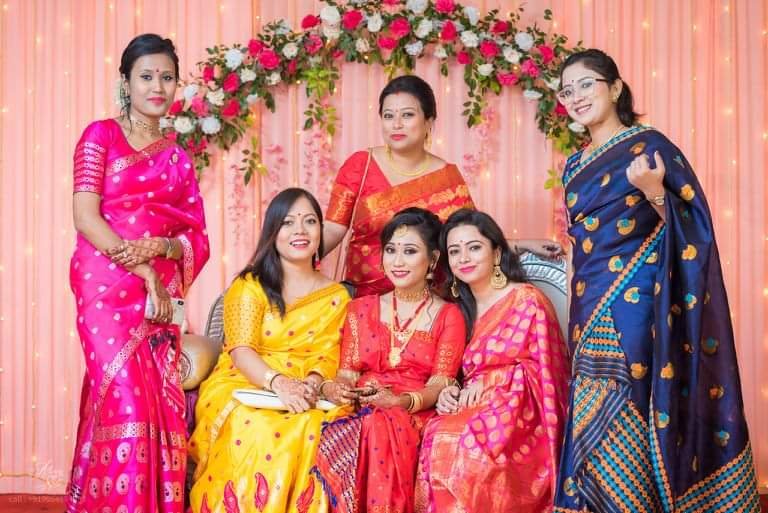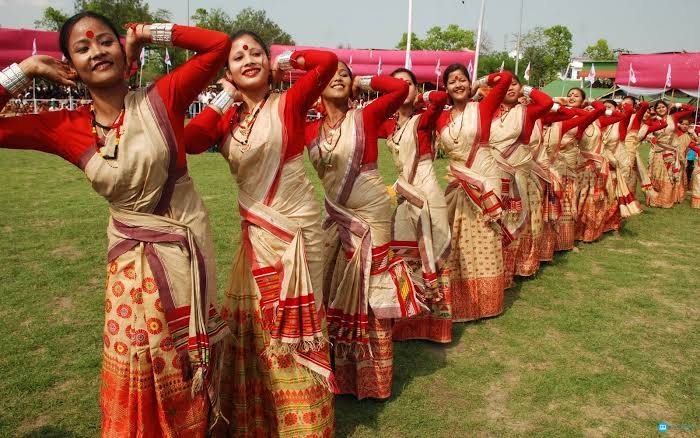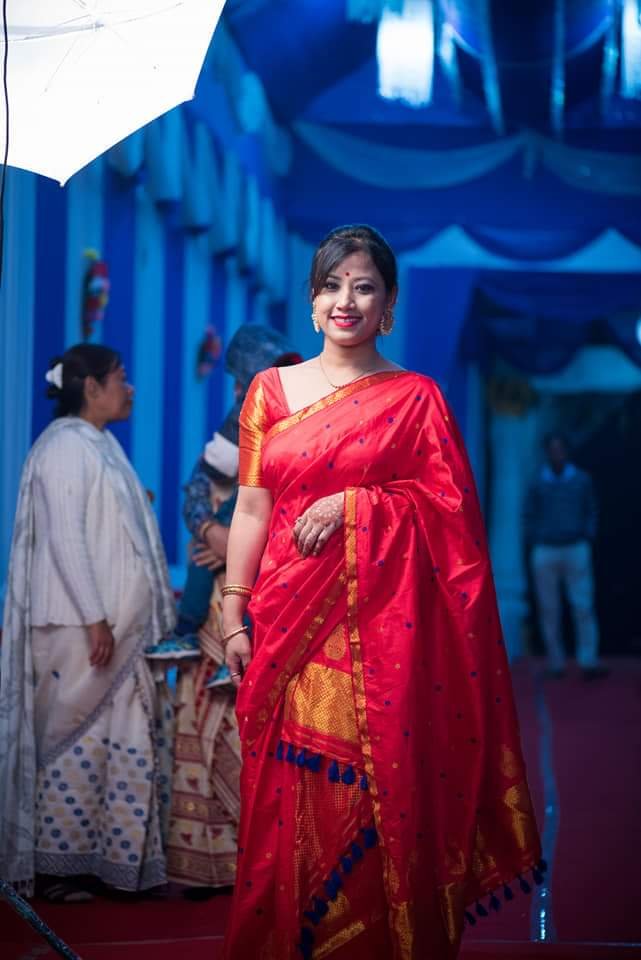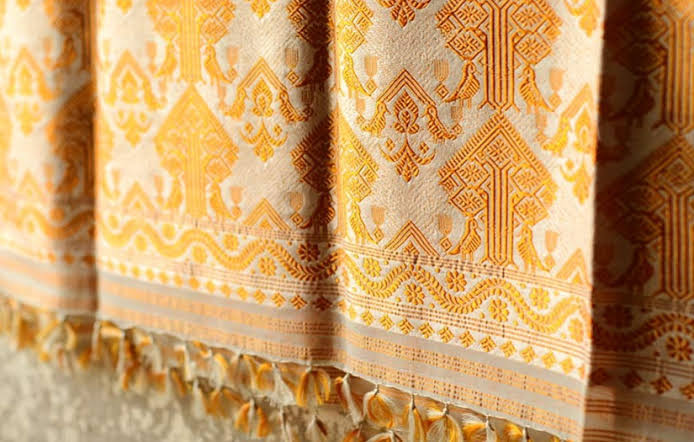Assam silk is the pride of every Assamese and we flaunt it in style and grace too. Assam produces three indigenous wild silk namely Muga, Paat and Eri.
Muga is the product of the silkworm Antheraea assamensis endemic to Assam. The larvae of these moths feed on som and sualu leaves, and the result is a fine textured, glossy and durable golden coloured silk.
Paat is a brilliant white or off-white silk produced by Bombyx textor silkworms which feed on mulberry leaves.
Eri is made by Samia cynthia recini which feed on leaves of castor oil plant. This silk is soft and warm and popular as shawls and quilts.

Image source
Assam Silk famous Origin place
Sualkuchi, situated 35 kms from Guwahati city on the north bank of river Brahmaputra, is the textile hub of Assam. Initially what started with a few handloom cottage industries has today grown into a commercial hub producing quality silk products.
The Assam silk industry has been able to generate employment to the locals and make them self-dependent. Sualkuchi attracts a lot of tourists from across the world every year because of this silk industry. Several travel agencies in Guwahati offer day tours with guides to Sualkuchi.
What is Assamese Mekhela Sador?
The traditional Assamese mekhela sador is a three piece attire which includes the lower skirt called mekhela, the blouse and the sador which is wrapped around the waist and bosom. Normally the ladies wear cotton mekhela sadors at home, and muga, paat or eri are occasional wears only.
Although silk was cultivated and woven by most women all around Assam, the silk of Sualkuchi was given royal patronage during the Ahom rule in Assam. Since then Sualkuchi was made an important centre of silk weaving encompassing cotton, silk and khadi textiles.

Image source
Paat Silk
The wedding trousseu of every Assamese bride religiously includes at least one muga silk mekhela sador and one white paat silk. Paat can be dyed too and therefore a variety of colours with latest motifs are available.
White paat is generally worn by a bride during the marriage ceremony as white is the symbol of purity. Whether Choklong or Xom or any other marriage form, white is considered auspicious for the marriage ceremony.
The particular set in the image above is called the main set in a wedding trousseu and comes along with a reeha , which is like a sador but smaller in breadth.
The reeha is also worn during the marriage ceremony and is particularly very symbolic. This reeha is the identity of a married woman in Assam and is worn on all religious occasions.

Image source
Muga silk
Muga mekhela sador is widely worn during Bohaag Bihu or Rongali Bihu, apart from other occasions. In fact, Muga is synonymous with Bohaag Bihu. Bohaag is the Assamese New Year and is celebrated with much enthusiasm throughout the state.
Husori and Bihu dance are performed by the youngsters and elders alike from household to household ushering in prosperity.
The Bihu dancers wear muga mekhela sador and adorn themselves with traditional jewellery, kopou phool on their hair buns and jetuka on their palms.
Eri Silk
Eri is also a very revered silk in Assam. The name Eri is derived from the Assamese word “era” which means “castor”, as the silkworm feeds on “castor plants”.
Eri shawls are widely used for gifting. If you are in Assam and you receive an eri product it’s to show respect because for us guests are like God.
“Atithi devo bhava”.
Eri nowadays can be dyed too and many colour variants in stoles, shawls and mekhela sador are available in the market.
Eri is also known as endi or errandi in India. The texture of this fabric is coarse, fine and dense. Due to its thermal properties it is warm in winter and cool in summer.
Eri silk is also called ahimsa silk because the cocoon is harvested to be spun only after the moth leaves the cocoon. So literally no silkworm is killed during the process.

Image source
The increasing global appeal of Assamese traditional dress
Assamese traditional mekhela sador tends to be quite expensive, be it muga, paat or eri. In the recent years the traditional motifs and designs have seen a lot of changes with a whole new bunch of designers coming into the scene.
The new designers cater to the taste of the global market and have successfully promoted the Assamese traditional mekhela sador in both national and international fashion stage.
Thanks to their invaluable efforts the mekhela sador is appreciated worldwide today. The youngsters today are also catching up with our traditional attire flaunting it in their own way and thereby attracting the appreciation of millions.

3 comments